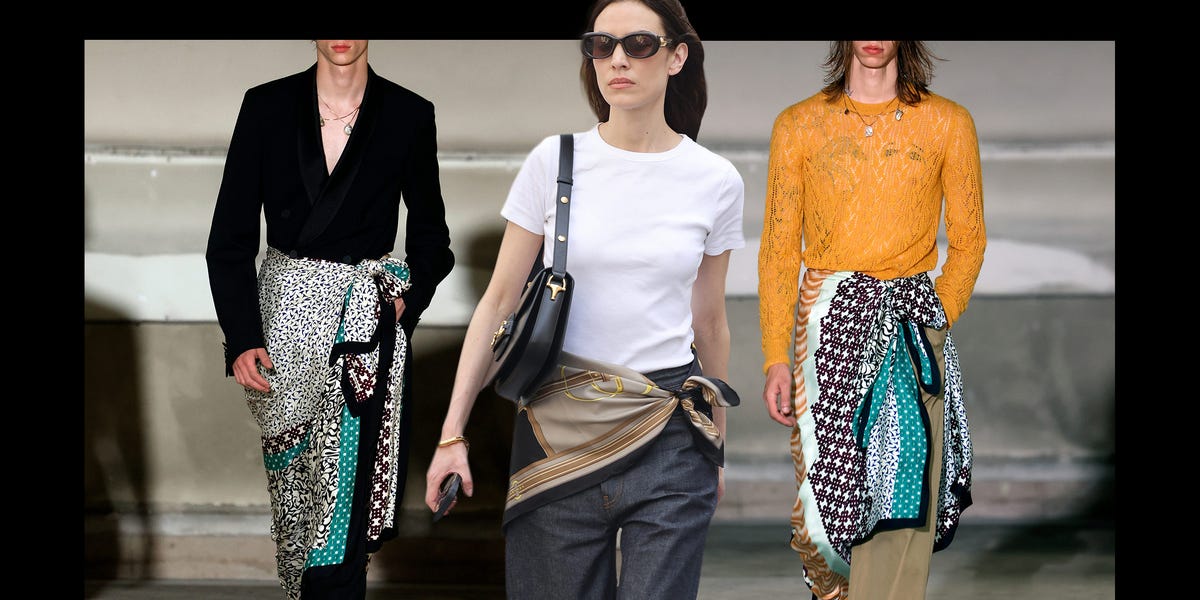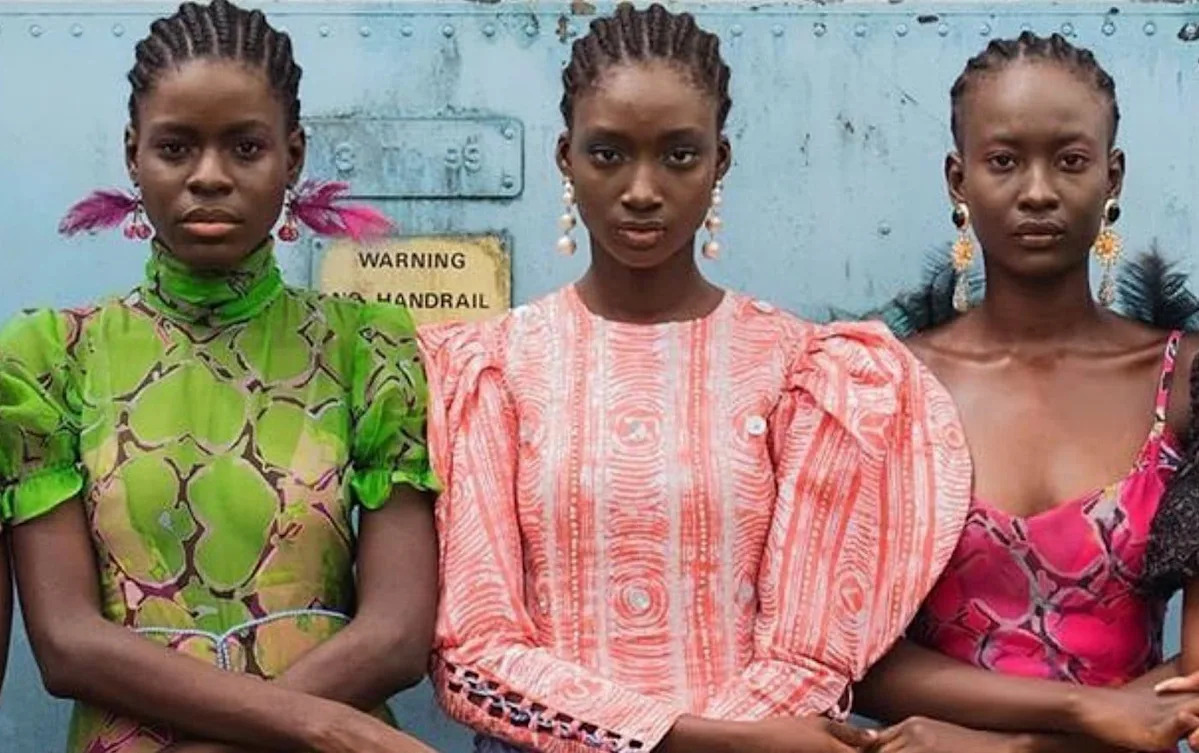At Spring 2026 Paris Men’s Fashion Week, Julian Klausner debuted his inaugural menswear collection for Dries Van Noten to the tune of soft tailoring, sequined tank tops, and cinched waists. Of the most notable takeaways—and there were many—one styling trick sticks in my mind: sarongs or pareos tied vacation-style over polished trousers.
Klausner’s dressed-up-meets-dressed-down dialogue here is wildly alluring. One look features an evening jacket with a satin shawl collar and black tailored pants with a slightly relaxed fit. The black-tie pieces clash with a printed sarong, wrapped skirt-like so it nearly grazes the floor and accessorized with a pair of flip-flops and layered necklaces. Another ensemble exhibits an open-weave crewneck knit, khaki trousers, and a similar sarong, also punctuated by flip-flops and necklaces.
My love of this styling trick is, admittedly, riddled with recency bias. After seeing Alexa Chung wearing a scarf tied around grey trousers and a plain white tee a few weeks ago, I’ve been cataloging screenshots from Instagram stories of similar looks over the past few weeks. And more often than not, the people I’ve observed are using a silk scarf tied like a sarong in lieu of an actual, full-skirted sarong, but still wearing it over their day-to-day clothing. It feels even more DIY this way—most of us have a silk scarf lying around somewhere.
My saved folder documents Jenni Lee, founder of Comme Si, knotting a colorful small scarf over her grey knit-dress-clad baby bump. Magasin founder Laura Reilly wore a long printed scarf over a muscle tank and a silk column skirt on the streets of Paris. Juju Ferentino, founder of jewelry brand JuJu Vera, tied a vintage Hermès scarf around a knit tank and cream trousers while on vacation. And writer and influencer Monica de La Villardière placed a red silk scarf atop a fitted black T-shirt and slim black capris, also à Paris.
De La Villardière credits stylist and friend Lolita Jacobs as the “woman who launched a thousand waist scarves.” In an interview with De La Villardière, Jacobs calls the trick a key ingredient to her “perfect outfit.” Funnily enough, a photo of Jacobs doing so blew up on my own Instagram last year. In the image, she opted for a bandana and knotted it over a white tank, then added a flash of green with a cardigan peeking from beneath a navy pinstripe suit.
De La Villardière recounts, “I saw her wearing a lovely scarf over a dress at the beginning of last summer (or maybe it was two summers ago) and immediately felt compelled to try it.” She does not consider herself a trend follower; the whole premise of her Substack is wearable yet stylish recommendations. But for this, she made an exception.
In fact, de La Villardière has now played around with the idea a few times. For a boat trip a while back, she knotted a solid red scarf, corners tied at the right hip, over a long blue-and-white striped shirt dress. “It’s as summer-y as you can get,” she explains. “There’s the sarong reference, as you say, but a scarf tied somewhere unexpected like that has a sort of old-school vintage St Tropez feel—kind of ‘70s.” And it’s practical.
For what would otherwise be a simple look, the scarf addition “marks the waist and is flattering, but doesn’t look even vaguely try-hard,” she continues. “I actually find summer dressing in general kind of boring compared to, say, autumn layers. When it gets really hot, there’s only so much you can wear.” This maneuver is warm-weather friendly—no long sleeves or pant legs necessary.
The sarong hails from Southeast Asian culture. The paleo, from Polynesian and Hawaiian islands. The styles are designed for a hot climate. So, I find it extra intriguing in the context of Klausner’s Dries Van Noten collection for fall—probably because, seasonally speaking, it shouldn’t be there. The contrast of a vacation-ready tropical print and a pair of work-appropriate grey slacks feels strikingly, perfectly compelling. It’s beach-cover-up-meets-corp-core. And as I sit in my own office looking longingly at the sun outside, I could use a dose of that sartorial serotonin.











